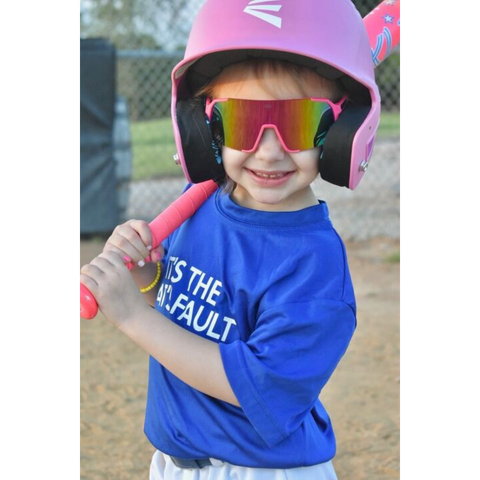Youth baseball is not just about physical prowess and technical skills—it's also about mental strength and strategic thinking. Goal setting and visualization are powerful tools that can help young athletes unlock their full potential and achieve success on the baseball field. In this blog, we'll explore how goal setting and visualization techniques can be applied in youth baseball to enhance performance, boost confidence, and foster a winning mindset.

Setting SMART Goals
Setting clear, specific, and achievable goals is the first step towards success in youth baseball. Coaches and players can use the SMART criteria to set effective goals:
Specific
Goals should be clear and specific, such as improving batting average, increasing pitching accuracy, or mastering a new fielding technique.
Measurable
Goals should be quantifiable so that progress can be tracked and measured over time. For example, setting a goal to hit a certain number of home runs in a season.
Achievable
Goals should be realistic and attainable based on the player's skill level, experience, and commitment.
Relevant
Goals should be relevant to the player's overall development and aligned with the team's objectives.
Time-bound
Goals should have a specific timeline or deadline for completion, such as improving fielding skills before the start of the next season.
By setting SMART goals, players can focus their efforts, stay motivated, and track their progress towards continuous improvement.

The Power of Visualization
Visualization, also known as mental imagery or mental rehearsal, is a technique used by athletes to mentally rehearse their actions and outcomes before they occur. Visualization can help youth baseball players:
Enhance Performance
Visualizing successful performance can help players build confidence, reduce anxiety, and improve their overall performance on the field.
Improve Focus and Concentration
Visualization can help players sharpen their focus and concentration by mentally rehearsing game situations and strategies.
Develop Muscle Memory
Visualization can reinforce neural pathways and improve muscle memory, making it easier for players to execute specific skills and techniques during games.
Manage Pressure and Stress
Visualization can help players prepare for high-pressure situations and manage stress and anxiety more effectively.

Practical Tips for Visualization
Coaches and players can incorporate visualization into their training routines using the following tips:
Create a Mental Movie
Encourage players to vividly imagine themselves performing specific skills and actions, such as hitting a home run, making a diving catch, or throwing a perfect pitch.
Engage All Senses
Encourage players to engage all their senses while visualizing, including sight, sound, touch, and even smell and taste. The more detailed and immersive the visualization, the more effective it will be.
Practice Regularly
Incorporate visualization exercises into regular training sessions and pre-game routines to help players develop their mental imagery skills over time.
Stay Positive
Encourage players to focus on positive outcomes and visualize success rather than dwelling on mistakes or failures.

Conclusion
Goal setting and visualization are powerful tools that can help youth baseball players unlock their full potential and achieve success on the field. By setting clear, specific, and achievable goals and incorporating visualization techniques into their training routines, players can enhance their performance, boost their confidence, and develop a winning mindset. Together, coaches and players can harness the power of mental imagery to take their game to the next level and achieve their goals in youth baseball.
For Harnessing the Power of Mental Imagery for Success in Youth Baseball, we have baseball gear at an affordable price, mpthreebaseball.com has a great selection of both on-field gear and gameday shirts that are sure to spread some smiles. Shop our shirts, sunglasses, and more.
